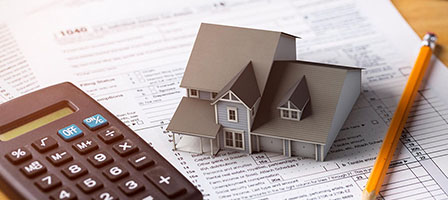RENTING YOUR HOME OR VACATION HOME
If you own a home in a vacation locale – whether it is your primary residence or a vacation home – and are considering renting it out to others, there are complicated tax rules referred to as the “vacation home rental rules” that you need to be aware of.
Generally, the tax code breaks a “vacation rental” into three categories, each with a different treatment for income and expenses:
- Rented Fewer than 15 Days – If you rent your home for fewer than 15 days during the tax year, the tax code says that you do not need to report the income and that you can still deduct 100% of the property taxes and qualified mortgage interest as an itemized deduction. Yes, you heard me correctly: the government is actually allowing you to ignore the income, regardless of the amount, if you rent the home for fewer than 15 days during the year. This rule offers some opportunities for substantial tax-free income, especially for more expensive homes. Here are some examples:
o Rental as a film location – Typically, film production companies will pay substantial amounts (thousands per day) for the short-term use of homes as movie sets. Individuals with unique properties can register with a local film location company.
o Home in a vacation locale – Individuals with homes in popular tourist or vacation locales can rent their homes out to vacationers in their area while they are on vacation themselves.
o Home in the area of a special event – When a one-time or special event such as a major sports event (think the Super Bowl) or convention comes to town, hotel rooms may be scarce or even fill up. Homeowners in these locations may want to rent their homes short-term during the activity while getting out of town to avoid the crowds.
However, be careful – if the rental goes over 14 days, the income is no longer tax-free. When calculating the number of days, the definition of a day is generally “the 24-hour period” for which a day’s rental would be paid. Thus, a person using a dwelling unit from Saturday afternoon through the following Saturday morning would generally be treated as having used the unit for seven days even though the person was on the premises on eight calendar days.
Even though the income is tax-free, the property tax and interest for the period is still deductible, directly related rental expenses such as agent fees, utilities, post-rental cleaning, etc. are not deductible.
- Rented 15 Days or More – When the home is rented 15 days or more, the income must be reported. However, the tax treatment depends upon how many days you used the home personally:
o Personal Use More Than 10% of the Rental Days – In this scenario, no rental tax loss is allowed. Let’s assume that the personal use of the home is 20%. As for the remaining 80%, it is used as a rental. The rental income is first reduced by 80% of the taxes and interest; if, after deducting the interest and taxes, there is still a profit, the direct rental expenses (such as the rental portion of the utilities, insurance and any other direct rental expenses) are deducted, but not more than will offset the remaining income. If there is still a profit, you can take depreciation, but it is again limited to the remaining profit. End result: No loss is allowed, but any remaining profit is taxable. The other personal 20% of the interest and taxes is deducted as an itemized deduction subject to mortgage interest and Alternative Minimum Tax (AMT) limitations. Take note that if the rental income becomes less than the business portion of the interest and taxes, the balance of the interest and taxes is still deductible as home mortgage interest and taxes.
o Personal Use 10% or Fewer of the Rental Days – In this scenario, the home’s use would be allocated into two separate activities, a rental and a second home. Let’s say that the home is used 5% for personal use: 5% of the interest and taxes are treated as home interest and taxes that can be deducted as an itemized deduction. The other 95% of the interest and taxes are rental expenses, combined with 95% of the insurance, utilities, and allowable depreciation and 100% of the direct rental expenses. The result is a deductible tax loss, which is combined with all other rental activities and limited to a $25,000 loss per year for taxpayers with adjusted gross incomes (AGI) of $100,000 or less. This loss allowance is ratably phased out between $100,000 and $150,000 of AGI. Thus, if your income exceeds $150,000, the loss cannot be deducted; it is carried forward until the home is sold or there are gains from other activities that can be used to offset the loss.
When figuring the personal use days, include days used by an owner, co-owner, or family member of the owner/co-owner as well as days used under a reciprocal arrangement. However, you can exclude “fix-up” days, which are days spent repairing and maintaining the property.
Word of Caution – Beginning in 2013, passive rental income is subject to the new 3.8% tax on net investment income that is part of the Affordable Care Act (“Obamacare”). So if the net result from renting the home is a profit, in addition to being subject to regular tax, the profit will also be subject to the net investment income tax. The gain from the sale of your primary home (in excess of the allowable home gain exclusion) and the gain from the sale of your second home (even if you never had rental income from it) are also subject to the 3.8% tax on net investment income in addition to the capital gains tax.
A number of other rules apply to special situations not covered here. If you have questions about how the vacation rental rules will apply to your unique circumstances, please give this office a call.








Leave a Reply
Want to join the discussion?Feel free to contribute!